Keshwa Chaca – Last Suspension Rope Bridge Of Inca People
A. Sutherland - AncientPages.com - Hanging rope bridges (or the so-called suspension rope bridges) were built by the Inca over canyons, rivers, and ravines. They linked the Inca Empire, providing access to even the most inaccessible region.
Inca suspension rope bridge - Credit: Adobe Stock - Danita Delimont
Five centuries ago, the Andes were filled with hanging bridges. It is believed there were as many as two hundred of them. Also, in Peru – due to the country’s difficult geography, many places were joined by suspension bridges made of vegetable fiber.
The so-called “suspension rope bridges” or “hanging bridges” were important to the Inca’s road infrastructure. They were needed for trade, communication, development, and dominance over the region.
Today, only one suspension rope bridge is left, known as “Keshwa Chaca” (or Q´eswachaka). The Inca have an old tradition of renovating this bridge. Each year, several Cusco families (about a thousand people from different communities ) meet at the bridge's location and prepare a new structure during four days of hard work.
The bridge is located in the department of Cusco, over the Apurímac River, at 3,700 m above sea level.
The “Keshwa Chaca” bridge has been there for 500 years, and the tradition of renewing it has been continued from generation to generation. This bridge owes its existence to the involvement of the local population, which rebuilt it in June each year according to techniques that the Inca ancestors used.
What Keshwa-Chaca Is Made Of?
The Inca suspension rope bridge is created of four parallel ropes (each of them consists of three intertwined cords), on which small twigs are arranged diagonally. Two additionally suspended ropes (they are much thinner) form a handrail. They are connected to the bridge by a system of vertical ropes arranged close to each other, forming balustrade-like support for safety while traversing the bridge.
The whole structure is fastened to stone platforms (abutments) on both sides of the ravine.
Reconstruction Of Keshwa Chaca Takes Three Days
On the first day, people of the communities go out and search for a solid straw of vegetal fiber (in Quechua, it is called “Ichu”). Such fibers were and are today used for the construction of the last hanging rope bridge.
Keshwa Chaca - Suspension Rope Bridge. Credit: Adobe Stock - Danita Delimont
Once the required amount of Ichu has been collected, women weave the straw to form strong ropes, and when they are ready, men begin their job because they are responsible for joining the rope from end to end and then braiding it.
During the second day, the structure of the old bridge is disarmed and removed along with the stone nails that sustain the bridge. Then, the four new ropes that are the base of the structure of the new bridge are placed.
On the third day, the villagers work with assembling the handrails and the bridge's surface. The fourth day is the time of celebration of the reconstruction of the bridge. According to the ancient 500 hundred years old custom, the Inca people listen to their traditional music and perform indigenous dances.
Over time, many bridges were damaged or totally destroyed due to weather conditions (they are constructed at very high altitudes - Keshwa Chaca is 3,700 m above sea level), and the strength of the used material is also low.
However, despite the apparently low strength of the materials used in their construction, the Inca’s Keshwa Chaca is able to maintain the weight of 56 people.
Updated on October 14, 2023
Written by – A. Sutherland - AncientPages.com Senior Staff Writer
Copyright © AncientPages.com All rights reserved. This material may not be published, broadcast, rewritten or redistributed in whole or part without the express written permission of AncientPages.com
Expand for referencesMore From Ancient Pages
-
 Operation Nightingale – Veterans Uncover Impressive 2,000-Year-Old Celtic Treasure
Archaeology | Feb 21, 2025
Operation Nightingale – Veterans Uncover Impressive 2,000-Year-Old Celtic Treasure
Archaeology | Feb 21, 2025 -
 Why Did Neanderthals Visit A Special Cave In Jersey For Over 100,000 Years?
Archaeology | Dec 13, 2016
Why Did Neanderthals Visit A Special Cave In Jersey For Over 100,000 Years?
Archaeology | Dec 13, 2016 -
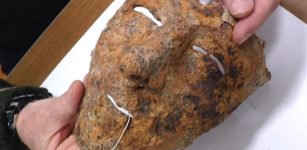 Extremely Rare Roman Cavalry Parade Mask Discovered In Romania
Archaeology | Feb 8, 2023
Extremely Rare Roman Cavalry Parade Mask Discovered In Romania
Archaeology | Feb 8, 2023 -
 Enchanted Ancient Egyptian Amulet Seal Discovered In Türkiye’s Amasra
Archaeology | Nov 15, 2022
Enchanted Ancient Egyptian Amulet Seal Discovered In Türkiye’s Amasra
Archaeology | Nov 15, 2022 -
 How Extensively Did Early Farmers Utilize Europe’s Rich Forests For Raising Their Livestock?
Archaeology | Nov 13, 2024
How Extensively Did Early Farmers Utilize Europe’s Rich Forests For Raising Their Livestock?
Archaeology | Nov 13, 2024 -
 On This Day In History: Joan Of Arc Enters Orleans, The City Besieged By The English – On Apr 29, 1429
News | Apr 29, 2016
On This Day In History: Joan Of Arc Enters Orleans, The City Besieged By The English – On Apr 29, 1429
News | Apr 29, 2016 -
 Peculiar Neolithic Anomaly Investigated In Scotland
Featured Stories | Apr 27, 2024
Peculiar Neolithic Anomaly Investigated In Scotland
Featured Stories | Apr 27, 2024 -
 Shepherd’s Graffiti Sheds New Light On Acropolis Lost Temple Mystery – New Research
Featured Stories | Jun 17, 2024
Shepherd’s Graffiti Sheds New Light On Acropolis Lost Temple Mystery – New Research
Featured Stories | Jun 17, 2024 -
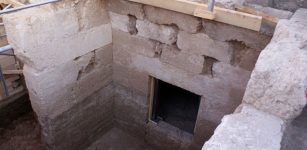 New Macedonian-Era Tomb With Four Chambers Was Discovered In Pella
Archaeology | Dec 23, 2015
New Macedonian-Era Tomb With Four Chambers Was Discovered In Pella
Archaeology | Dec 23, 2015 -
 Anartes: Forgotten Celtic Tribe And The Hercynian Forest With Strange Animals
Featured Stories | Jun 18, 2024
Anartes: Forgotten Celtic Tribe And The Hercynian Forest With Strange Animals
Featured Stories | Jun 18, 2024 -
 Vikings May Have Made Imitation Gold Dinar Found In Morston, Norfolk – Expert Says
Archaeology | Apr 5, 2023
Vikings May Have Made Imitation Gold Dinar Found In Morston, Norfolk – Expert Says
Archaeology | Apr 5, 2023 -
 Ancient Board Game Mancala Can Unlock Cutting-Edge Physics Discoveries
Artifacts | Sep 30, 2023
Ancient Board Game Mancala Can Unlock Cutting-Edge Physics Discoveries
Artifacts | Sep 30, 2023 -
 Wreckage From Famous Warships Explored In 3D On Anniversary Of Sinking
Archaeology | Nov 22, 2022
Wreckage From Famous Warships Explored In 3D On Anniversary Of Sinking
Archaeology | Nov 22, 2022 -
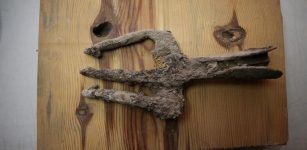 1700-Year-Old Iron Trident Found In The Ancient City Of Assos, Turkey
Archaeology | Nov 1, 2023
1700-Year-Old Iron Trident Found In The Ancient City Of Assos, Turkey
Archaeology | Nov 1, 2023 -
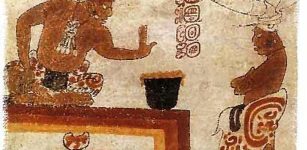 Ancient Maya Sacred Groves Of Cacao Trees – Located
Archaeology | Jan 31, 2022
Ancient Maya Sacred Groves Of Cacao Trees – Located
Archaeology | Jan 31, 2022 -
 On This Day In History: Naval Battle Of Rennell Island Fought Off Guadalcanal – On Jan 29, 1943
News | Jan 29, 2017
On This Day In History: Naval Battle Of Rennell Island Fought Off Guadalcanal – On Jan 29, 1943
News | Jan 29, 2017 -
 Richard The Lionheart: Famous Leader, Warrior And Military Mastermind But Not The Best English King
Featured Stories | May 29, 2017
Richard The Lionheart: Famous Leader, Warrior And Military Mastermind But Not The Best English King
Featured Stories | May 29, 2017 -
 Eros: Remarkable Greek God And One Of Those Who Created Everything That Exists Today
Featured Stories | Apr 19, 2023
Eros: Remarkable Greek God And One Of Those Who Created Everything That Exists Today
Featured Stories | Apr 19, 2023 -
 Dangerous Underground Secret In The Valley No-One Dares To Enter
Featured Stories | Jun 26, 2018
Dangerous Underground Secret In The Valley No-One Dares To Enter
Featured Stories | Jun 26, 2018 -
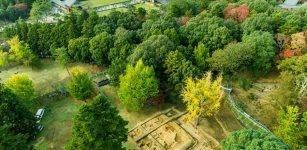 Impressive Ruins Of 13th Century Pagoda Remains Discovered At Nara’s Todaiji Temple, Japan
Archaeology | Dec 12, 2015
Impressive Ruins Of 13th Century Pagoda Remains Discovered At Nara’s Todaiji Temple, Japan
Archaeology | Dec 12, 2015


